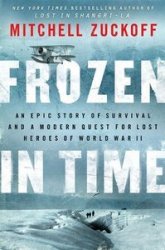The interdisciplinary nature of recent research speaks to the ways in which feminist historians have questioned the categories and processes of historical writing and are in the vanguard of those reinterpreting the past. Most would now argue that the writing of women’s history should also inform, nuance and contribute to the rewriting of mainstream history. History that is not written with the discoveries and theoretical approaches of women’s and gender history is only a partial story. A veritable string of authors can be cited, arguing that women’s history should now inform the rewriting of the canon, and more and more books are being published that try to rewrite the story of the past. This work began in earnest in the 1990s with books by Sian Reynolds on inter-war France, Maxine Berg on industrial change in England and the essays edited by Laura L. Frader and Sonya O. Rose on gender and class in Europe just to name three.26 There are actually two motives behind this, and I may appear to be stating the obvious. On the one hand, the omission of women from the grand narratives leaves those narratives lacking, misleading and often simply wrong. The feminists of the 1970s talked about ‘consciousness-raising’, and this is precisely what mainstream history has needed: an awareness of the simple fact that there might be another way to look at the past, that reading the sources with ‘gendered spectacles’ could reveal a different ‘truth’. Many standard mainstream histories were written by men about men, and not only were they, in our term, gender-blind, such an approach was not even questioned. Both the discourse and the language were male. Women’s history and gender history have challenged such an approach. But we also have to follow through and not allow gendered research to sit in its own ghetto, as a sub-field of history, as a fad. As Reynolds wrote, women’s history has the opportunity to rethink issues and periods from a feminist perspective, ‘not so much to challenge what has so far been written as to query what has not been written’,27 using research in women’s history to ask different questions and to propose alternative readings, to apply the perspectives and findings of women’s history to so-called mainstream history.
On the other hand, if women’s historians do not challenge and contribute to rewriting the canon, then the discoveries, approaches and alternative readings of women’s history will themselves not be taken seriously. Recently a noted Scottish historian (male) indicated that women’s history was passe, suggesting that we could move on and put it out of our minds. As Pat Hudson and W. R. Lee have said, ‘As long as research about women’s lives remains largely separate from wider issues such as these, the importance which society has attached to female activities and agency in the past (and in the present) will not change.’28 So this is the other side of the coin: not only do we need to shape mainstream history for the sake of history, but also we need to apply our efforts for the sake of women’s history. Thus in Jean H. Quataert’s words, European women’s history is at the crossroads.




 World History
World History









